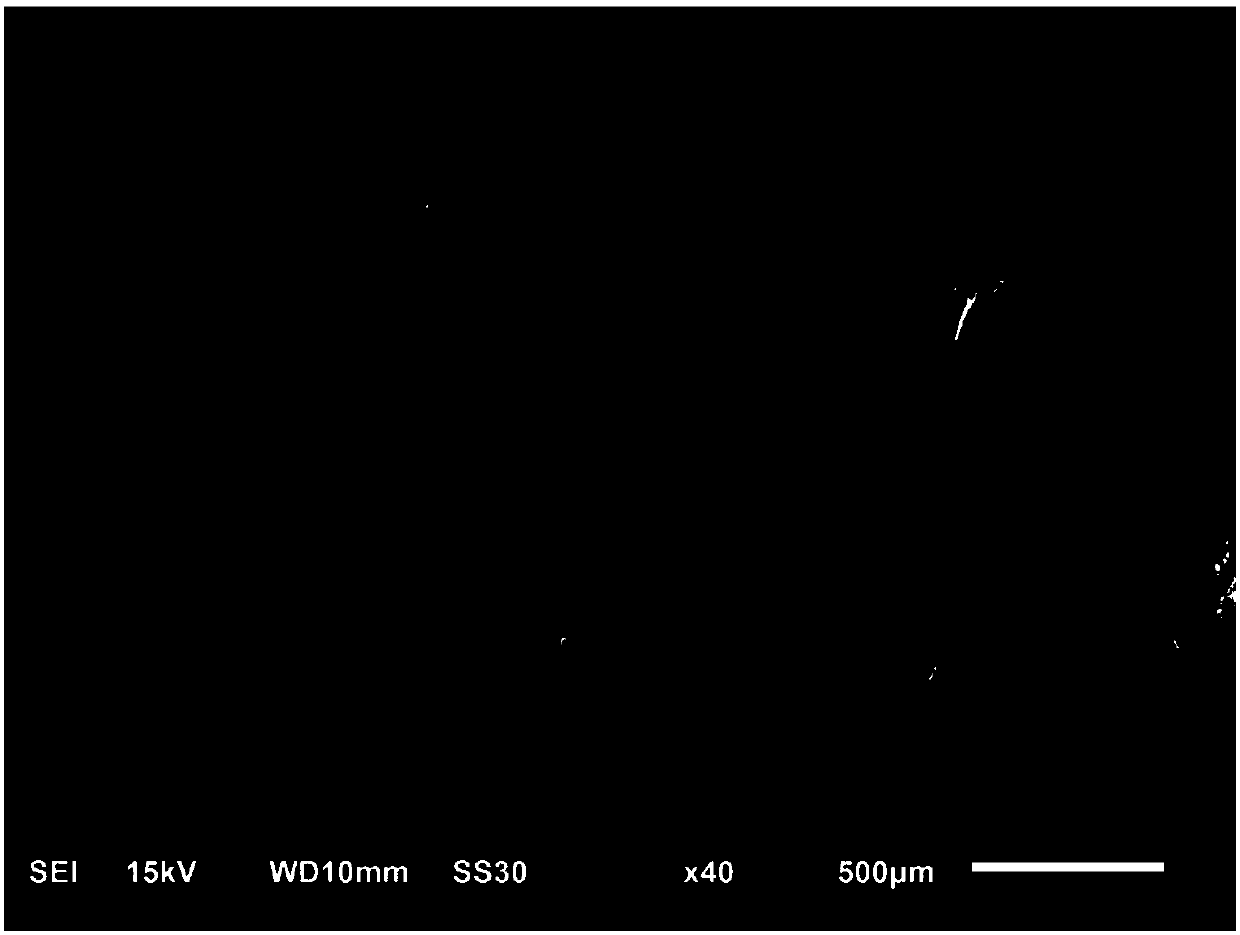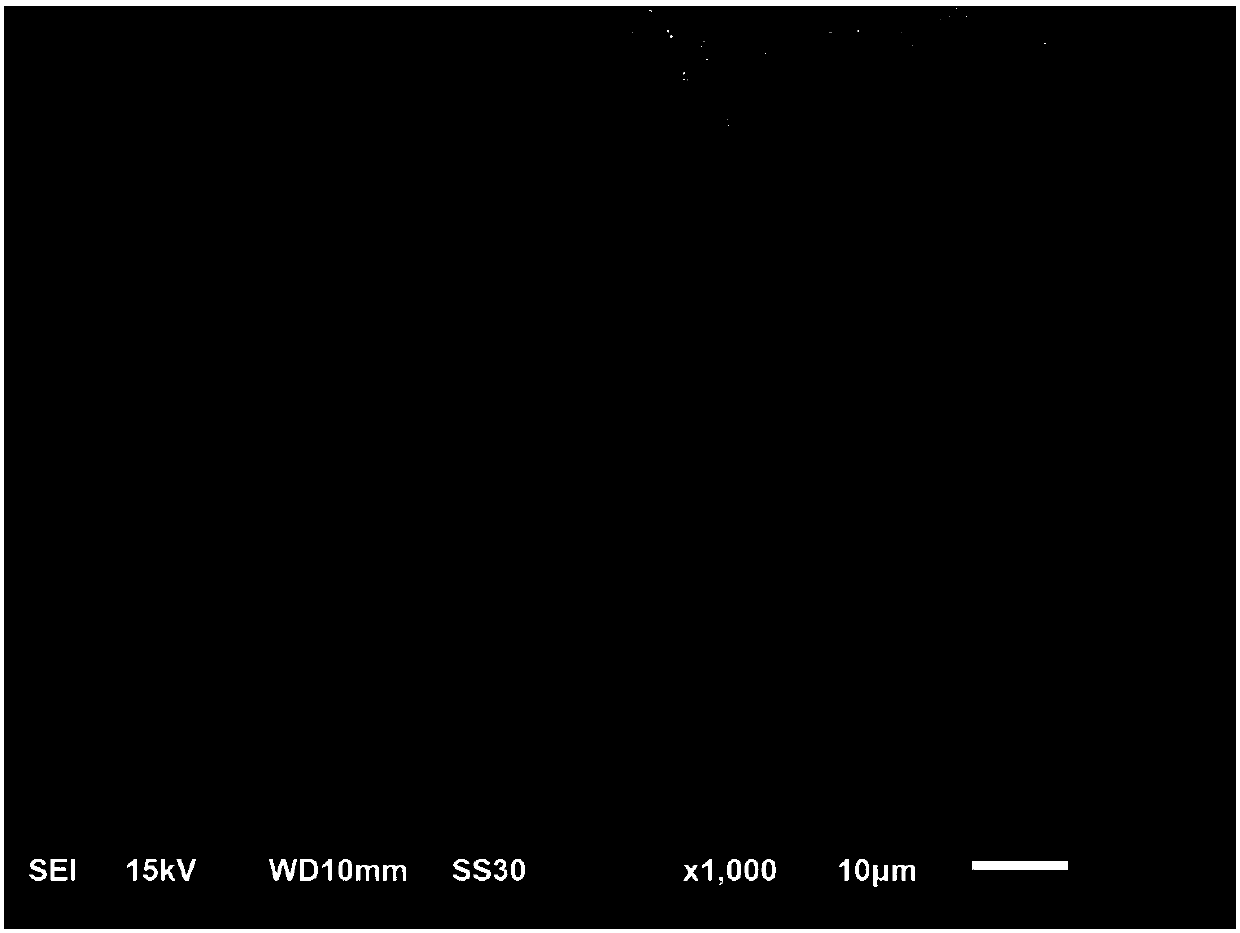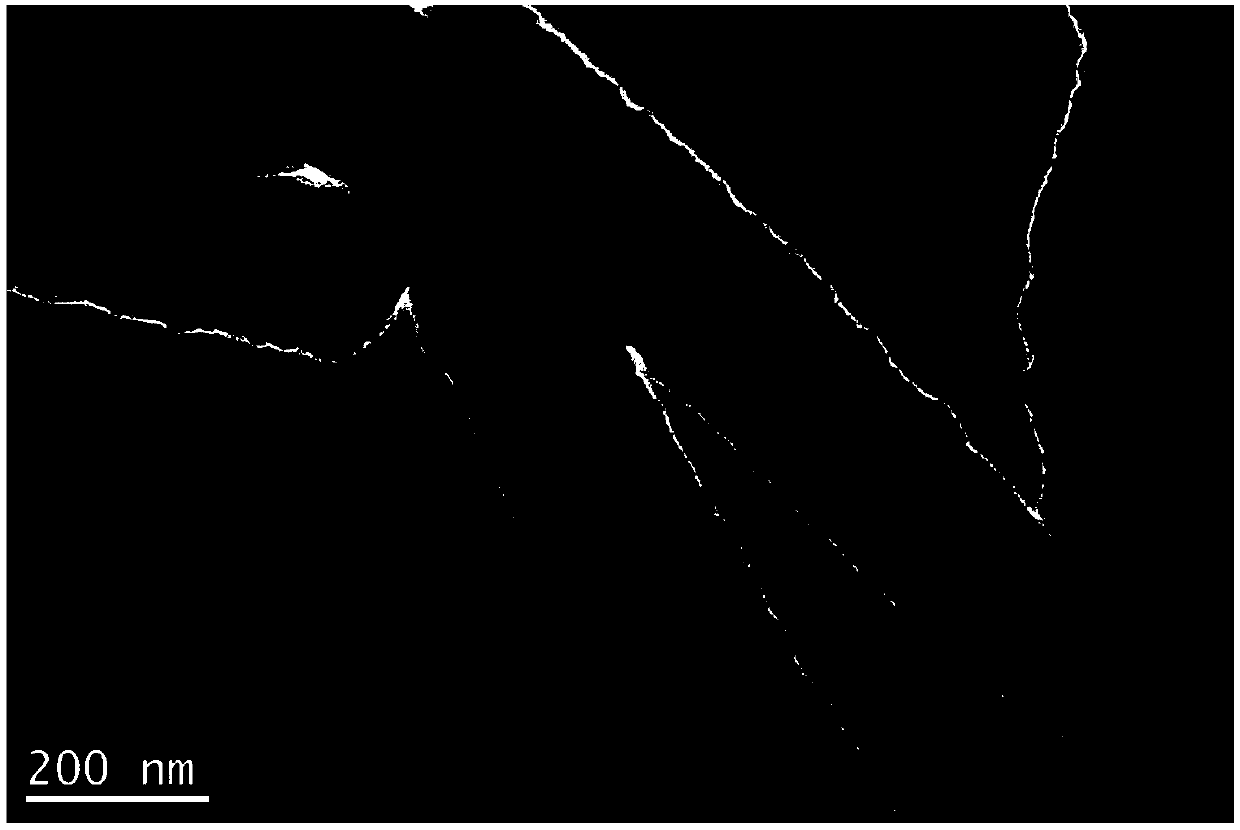Cellulose/silicon oxide composite aerogel elastomer, preparation method thereof and application of elastomer in field of oil-water separation
A composite aerogel and cellulose technology, applied in liquid separation, chemical instruments and methods, separation methods, etc., can solve the problems of limited practical application, non-degradable materials, secondary environmental pollution, etc. Conducive to recycling and reducing production costs
- Summary
- Abstract
- Description
- Claims
- Application Information
AI Technical Summary
Problems solved by technology
Method used
Image
Examples
Embodiment 1
[0054] Step 1: Weigh 12.5g of glucose, 3.75g of yeast extract, 5g of peptone, and 5g of disodium hydrogen phosphate in a beaker, add 500mL of water and stir to dissolve to obtain a bacterial culture medium; after sterilizing the culture medium, add 1mL Acetobacter xylinum solution HN001 was added to polystyrene foamed beads with a diameter of 500μm and incubated for 5 days to obtain a bacterial cellulose gel; remove the gel, rinse it with deionized water, and soak it in absolute ethanol solution To replace the internal water content, get an alcohol gel; take 5 g of alcohol gel, drain the ethanol on the surface, add it to 5 g of toluene, heat it at 80°C for 6 hours, then take out the gel and soak clean with toluene and absolute ethanol to obtain Cellulose frame template gel;
[0055] Step 2: Take 1g of the above cellulose frame template gel and add it to 10mL of absolute ethanol, add 0.1g of cetyltrimethylammonium bromide and stir to dissolve, add 1mL of tetramethyl silicate, stir...
Embodiment 2
[0058] Step 1: Weigh 25g of glucose, 7.5g of yeast extract, 10g of peptone, and 10g of disodium hydrogen phosphate in a beaker, add 1000mL of water and stir to dissolve to obtain a bacterial culture medium; after sterilizing the culture medium, insert 5mL wood Acetobacter liquid HN001, add polystyrene foamed beads with a diameter of 1300μm, stand still for 7 days to obtain bacterial cellulose gel; take out the gel, rinse it with deionized water, and soak it in anhydrous ethanol solution Displace the internal water to obtain the alcohol gel; take 5 g of alcohol gel, drain the ethanol on the surface, add to 50 g of toluene, heat at 25 ℃ for 6 hours, take it out and soak clean with toluene and absolute ethanol to obtain cellulose Frame template gel;
[0059] Step 2: Take 4g of the above cellulose frame template gel, add it to 50mL of absolute ethanol, add 0.3g of cetyltrimethylammonium bromide and stir to dissolve, add 4mL of tetrapropyl silicate, tetraethyl silicate 2mL, stir to f...
Embodiment 3
[0062] Step 1: The configuration of the medium is the same as that in Example 2. After the medium is sterilized by moist heat, 5 mL of Acetobacter xylinum solution HN001 is added, and polystyrene foamed beads with a diameter of 1700 μm are added, and the culture is allowed to stand still. After 7 days, the bacterial cellulose gel was obtained; the gel was taken out, rinsed with deionized water, and then immersed in an absolute ethanol solution to replace the internal water to obtain an alcohol gel; take 5 g of the alcohol gel and drain the surface Ethanol was added to 25g of toluene and heated at 80°C for 0.5h. After heating, take out the gel, soak and wash it with toluene and absolute ethanol to obtain the cellulose frame template gel;
[0063] Step 2: Take 6g of the above cellulose frame template gel, add to 50mL of absolute ethanol, add 2g of cetyltrimethylammonium bromide and stir to dissolve, add 6mL of tetrapropyl silicate, stir the solution to fully infiltrate the gel ; A...
PUM
| Property | Measurement | Unit |
|---|---|---|
| diameter | aaaaa | aaaaa |
| diameter | aaaaa | aaaaa |
| thickness | aaaaa | aaaaa |
Abstract
Description
Claims
Application Information
 Login to View More
Login to View More - R&D
- Intellectual Property
- Life Sciences
- Materials
- Tech Scout
- Unparalleled Data Quality
- Higher Quality Content
- 60% Fewer Hallucinations
Browse by: Latest US Patents, China's latest patents, Technical Efficacy Thesaurus, Application Domain, Technology Topic, Popular Technical Reports.
© 2025 PatSnap. All rights reserved.Legal|Privacy policy|Modern Slavery Act Transparency Statement|Sitemap|About US| Contact US: help@patsnap.com



